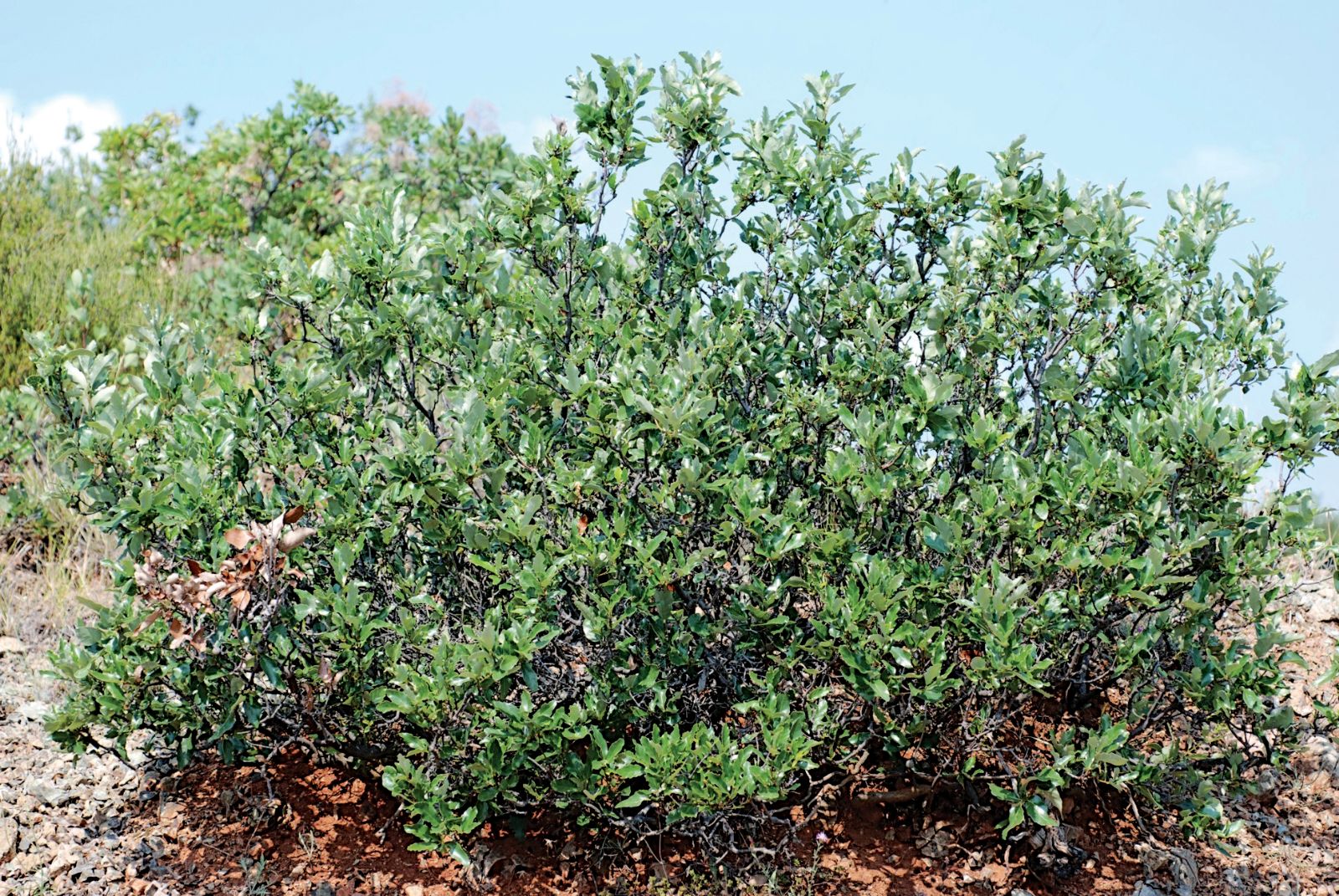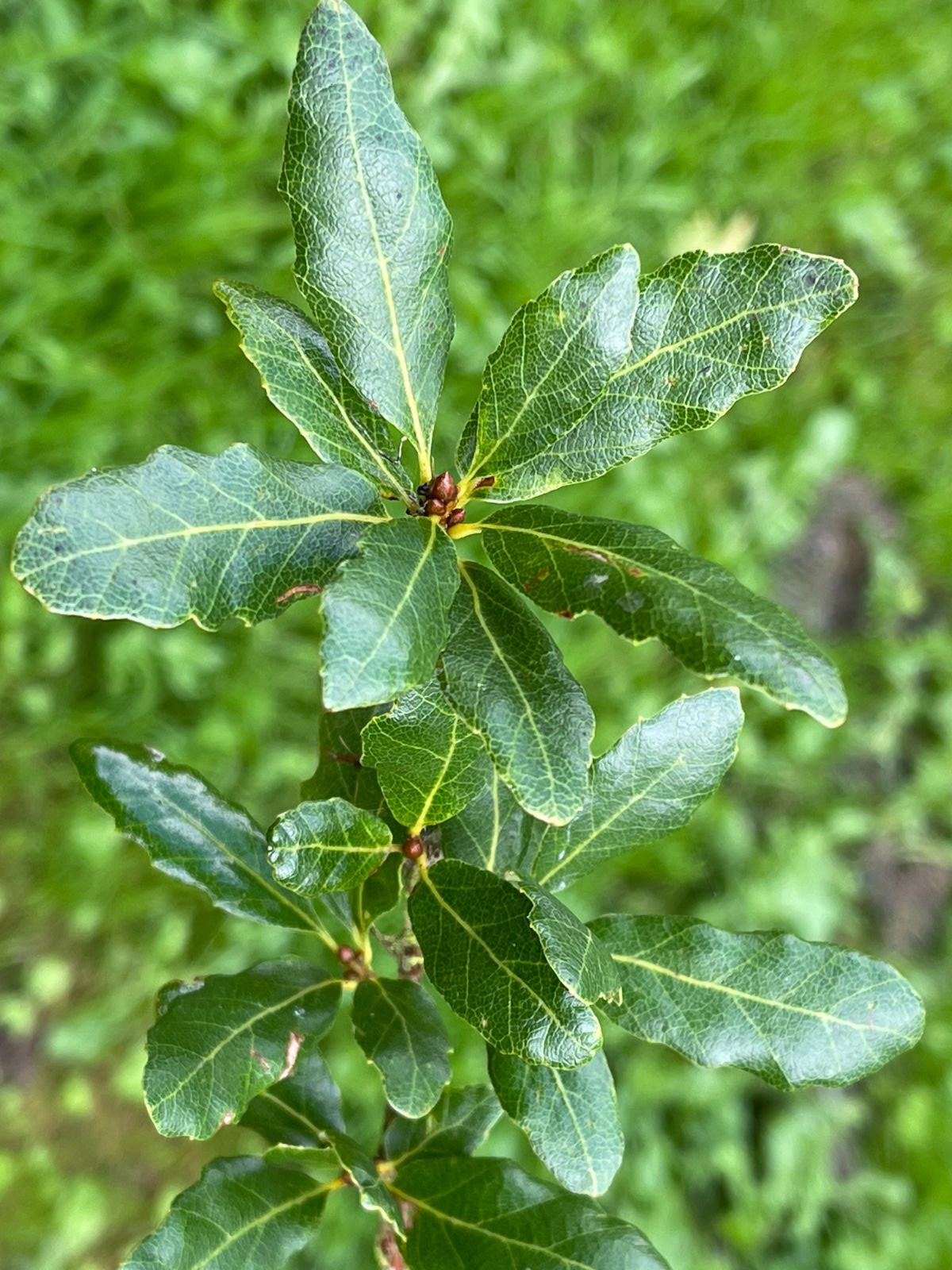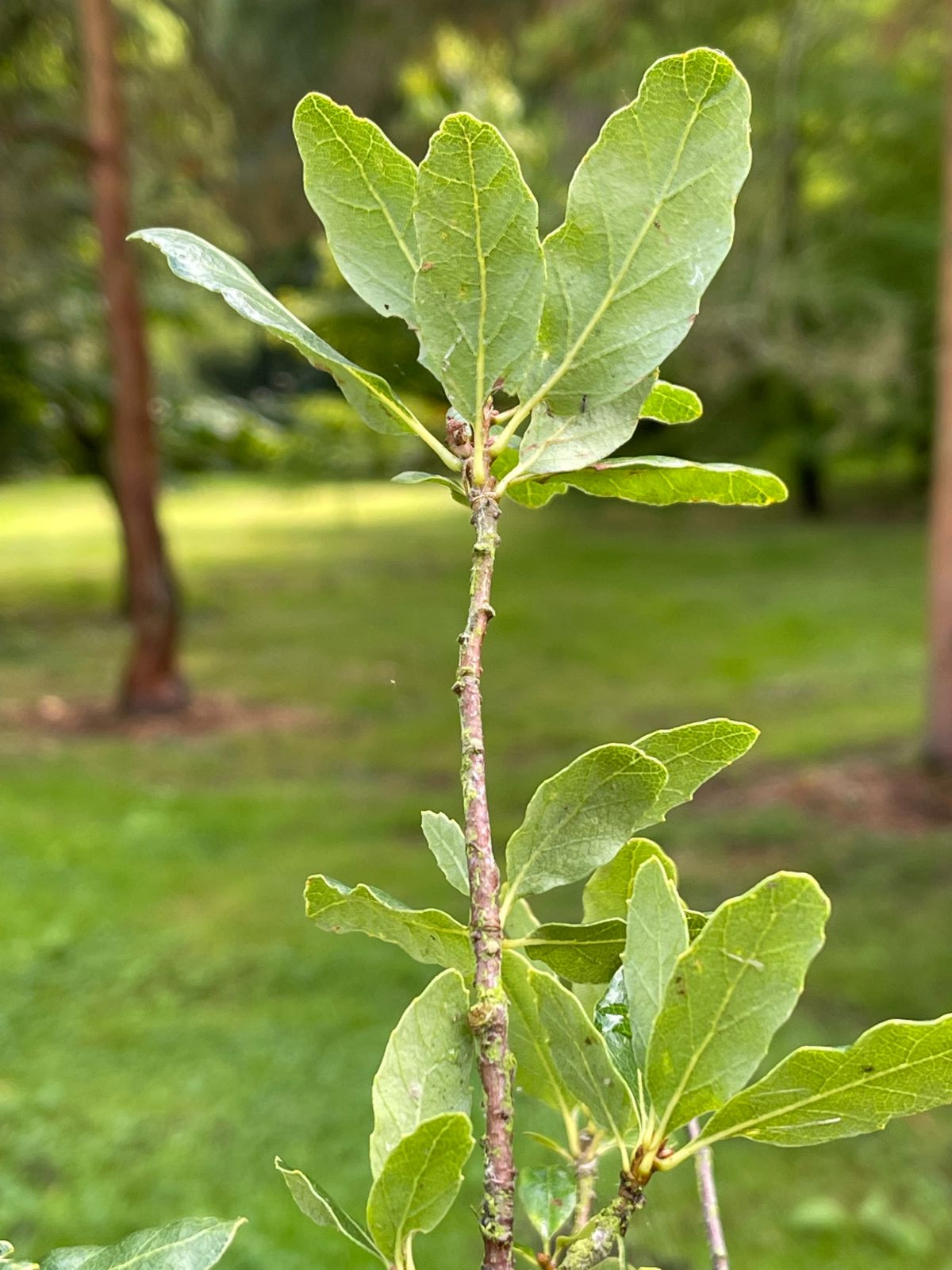Quercus euboica
Sponsor
Kindly sponsored by
The Trees and Shrubs Online Oak Consortium
Credits
Allen Coombes & Roderick Cameron (2021)
Recommended citation
Coombes, A. & Cameron, R. (2021), 'Quercus euboica' from the website Trees and Shrubs Online (treesandshrubsonline.
Genus
- Quercus
- Subgen. Cerris, Sect. Cerris
Synonyms
- Quercus trojana subsp. euboica (Papaioannou) K.I. Chr.
Other taxa in genus
- Quercus acerifolia
- Quercus acherdophylla
- Quercus acrodonta
- Quercus acuta
- Quercus acutifolia
- Quercus acutissima
- Quercus afares
- Quercus affinis
- Quercus agrifolia
- Quercus alba
- Quercus aliena
- Quercus alnifolia
- Quercus aquifolioides
- Quercus arizonica
- Quercus arkansana
- Quercus aucheri
- Quercus augustini
- Quercus austrina
- Quercus × auzendei
- Quercus baloot
- Quercus bambusifolia
- Quercus baronii
- Quercus bicolor
- Quercus brantii
- Quercus buckleyi
- Quercus canariensis
- Quercus canbyi
- Quercus candicans
- Quercus castanea
- Quercus castaneifolia
- Quercus cerris
- Quercus chenii
- Quercus chrysolepis
- Quercus coccifera
- Quercus cocciferoides
- Quercus coccinea
- Quercus conspersa
- Quercus crassifolia
- Quercus crassipes
- Quercus delavayi
- Quercus dentata
- Quercus deserticola
- Quercus dolicholepis
- Quercus douglasii
- Quercus dumosa
- Quercus durifolia
- Quercus eduardii
- Quercus ellipsoidalis
- Quercus emoryi
- Quercus engelmannii
- Quercus engleriana
- Quercus eugeniifolia
- Quercus fabri
- Quercus faginea
- Quercus falcata
- Quercus floribunda
- Quercus frainetto
- Quercus franchetii
- Quercus fruticosa
- Quercus fusiformis
- Quercus gambelii
- Quercus garryana
- Quercus geminata
- Quercus georgiana
- Quercus germana
- Quercus gilliana
- Quercus gilva
- Quercus glabrescens
- Quercus glauca
- Quercus graciliformis
- Quercus gravesii
- Quercus griffithii
- Quercus grisea
- Quercus guyavifolia
- Quercus hartwissiana
- Quercus hemisphaerica
- Quercus × hispanica
- Quercus hondae
- Quercus hypargyrea
- Quercus hypoleucoides
- Quercus ilex
- Quercus ilicifolia
- Quercus imbricaria
- Quercus incana
- Quercus infectoria
- Quercus insignis
- Quercus ithaburensis
- Quercus kelloggii
- Quercus × kewensis
- Quercus kiukiangensis
- Quercus laceyi
- Quercus laevis
- Quercus lamellosa
- Quercus lanata
- Quercus lancifolia
- Quercus laurifolia
- Quercus laurina
- Quercus × leana
- Quercus leucotrichophora
- Quercus × libanerris
- Quercus libani
- Quercus lobata
- Quercus lobbii
- Quercus lodicosa
- Quercus longinux
- Quercus longispica
- Quercus look
- Quercus × ludoviciana
- Quercus macranthera
- Quercus macrocalyx
- Quercus macrocarpa
- Quercus macrolepis
- Quercus marilandica
- Quercus mexicana
- Quercus michauxii
- Quercus mongolica
- Quercus monimotricha
- Quercus montana
- Quercus morii
- Quercus muehlenbergii
- Quercus myrsinifolia
- Quercus myrtifolia
- Quercus nigra
- Quercus × numidica
- Quercus oblongifolia
- Quercus obtusata
- Quercus oglethorpensis
- Quercus oxyodon
- Quercus pagoda
- Quercus palmeri
- Quercus palustris
- Quercus pannosa
- Quercus parvula
- Quercus petraea
- Quercus phellos
- Quercus phillyreoides
- Quercus planipocula
- Quercus poilanei
- Quercus polymorpha
- Quercus pontica
- Quercus prinoides
- Quercus pubescens
- Quercus pyrenaica
- Quercus rehderiana
- Quercus reticulata
- Quercus robur
- Quercus rotundifolia
- Quercus rubra
- Quercus rugosa
- Quercus rysophylla
- Quercus sadleriana
- Quercus salicina
- Quercus sartorii
- Quercus × schneideri
- Quercus schottkyana
- Quercus semecarpifolia
- Quercus senescens
- Quercus serrata
- Quercus sessilifolia
- Quercus setulosa
- Quercus shumardii
- Quercus sinuata
- Quercus spinosa
- Quercus stellata
- Quercus stenophylloides
- Quercus suber
- Quercus subspathulata
- Quercus tarokoensis
- Quercus tatakaensis
- Quercus texana
- Quercus tomentella
- Quercus trojana
- Quercus tungmaiensis
- Quercus turbinella
- Quercus × turneri
- Quercus undulata
- Quercus utahensis
- Quercus utilis
- Quercus uxoris
- Quercus variabilis
- Quercus velutina
- Quercus virginiana
- Quercus vulcanica
- Quercus warburgii
- Quercus wislizenii
- Quercus xalapensis
Shrub or small tree reaching up to 4 m tall. Shoots glabrous or sparsely hairy when mature. Leaves deciduous, leathery, lanceolate to ovate-lanceolate, up to 7 × 3 cm, sometimes more. Margin undulate, with up to 13 sharp teeth on each side. Green and glabrous above when mature, densely covered with silvery white hairs beneath, the midrib and lateral veins conspicuous. Petiole about 5 mm. Cup hemispherical, about 3 × 2 cm, acorns up to 2 cm long, mostly enclosed in the cup and ripening the second year. (Mucina & Dimopoulos 2000; Trigas & Zigiris 2009).
Distribution Greece Euboea (Evia)
Habitat Dry Pinus halepensis woodland on rocky soils from near sea level to 600 m, with Cotinus coggygria, Pistacia terebinthus, and Erica manipuliflora.
USDA Hardiness Zone 7
RHS Hardiness Rating H6
Conservation status Not evaluated (NE)
Taxonomic note Although recently treated as a subspecies of Q. trojana, Simeone et al. (2018) found that Quercus euboica appears genetically isolated from the former and recommended it be treated as a species. It differs from Q. trojana in its shrubby habit and leathery leaves white tomentose beneath.
This interesting species, only described in 1949, has a very resticted distribution and is rare in cultivation where it has proved to be very slow growing. Two plants are growing at the Botanical Garden of the Agricultural University of Athens (M. Papafotiou pers. comm. 2020). It was introduced to Sir Harold Hillier Gardens in 2006 when seed was sent from Euboea. It has reached 2.1 m tall at Thenford, England (D. Webster pers. comm. 2020) and two plants less than 1 m tall are at Arboretum des Pouyouleix, France (Béatrice Chassé pers. comm. 2020), with another small plant at Chevithorne Barton, England.
Kartsonas & Papafotiou (2009) developed a micropropagation technique for this species and recommended it as an ornamental plant and for reforestation due to its drought tolerance and ability to resprout after fire and grazing.
Though as yet Not Evaluated according to IUCN, Trigas and Zigras (2009) suggest it should be regarded as VU (Vulnerable). The images shown here are taken from their article in the Red Data Book of Rare and Threatened Plants of Greece.
The specific epithet derives from its occurrence on the island of Euboea (Evia or Evvia), Greece.




